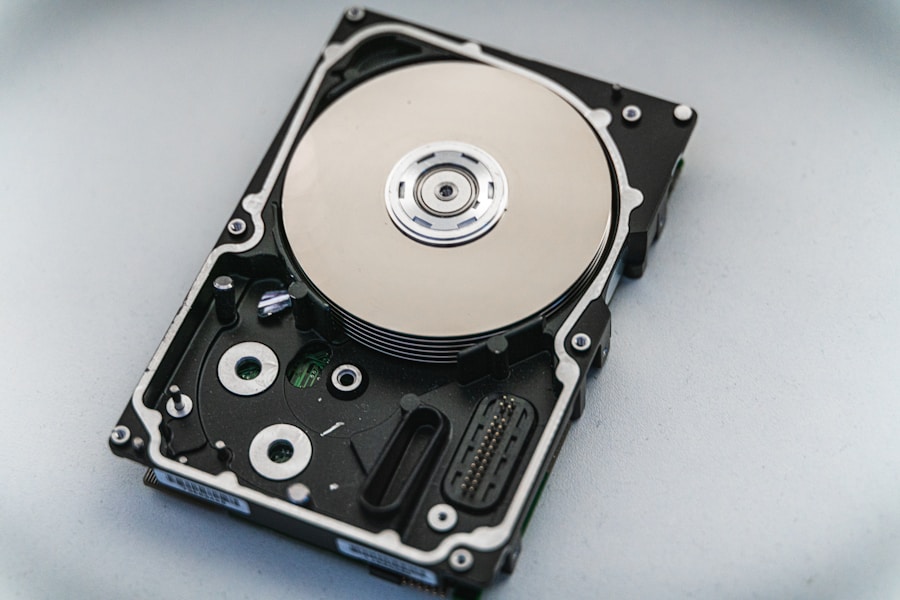
The Ultimate Guide to Data Recovery: Your Options Unveiled
Data loss is a common problem that many individuals and businesses face. It can occur due to a variety of reasons, including hardware failure, human error, software corruption, and natural disasters. When data is lost, it can have serious consequences, such as financial loss, loss of productivity, and damage to a company’s reputation. Understanding the causes of data loss is the first step in preventing it from happening in the future.
One of the most common causes of data loss is hardware failure. This can occur when a hard drive, solid-state drive, or other storage device malfunctions. Human error is another common cause of data loss, such as accidentally deleting important files or formatting a storage device. Software corruption can also lead to data loss, such as when a computer virus infects a system and corrupts files. Natural disasters, such as floods, fires, and earthquakes, can also cause data loss if the storage devices are damaged. By understanding the various causes of data loss, individuals and businesses can take steps to protect their data and minimize the risk of losing important information.
DIY Data Recovery Methods
When data loss occurs, many individuals and businesses attempt to recover their lost files using do-it-yourself (DIY) methods. There are several DIY data recovery methods that can be effective in some cases. One common method is to use data recovery software, which can scan a storage device for lost files and attempt to recover them. Another DIY method is to use file undelete tools, which can restore recently deleted files from a storage device. Additionally, some individuals and businesses attempt to recover data by using backup copies of their files or by manually repairing corrupted files.
While DIY data recovery methods can be effective in some cases, they also have limitations. For example, if a storage device is physically damaged, DIY methods may not be able to recover the lost data. Additionally, using DIY methods can be time-consuming and may require technical expertise. In some cases, attempting DIY data recovery can even worsen the situation and make it more difficult for professional data recovery services to recover the lost files. Therefore, it is important for individuals and businesses to carefully consider the risks and limitations of DIY data recovery methods before attempting to recover their lost files on their own.
Professional Data Recovery Services
When DIY data recovery methods are not effective or when the situation is more complex, individuals and businesses may turn to professional data recovery services for help. Professional data recovery services are offered by specialized companies that have the expertise and equipment to recover lost data from a variety of storage devices. These companies employ highly trained technicians who can diagnose the cause of data loss and use advanced techniques to recover the lost files.
Professional data recovery services can be effective in recovering lost data from a wide range of scenarios, including physical damage to storage devices, severe software corruption, and accidental file deletion. These services often use specialized equipment and cleanroom facilities to repair damaged storage devices and extract the lost data. Additionally, professional data recovery services can provide a higher success rate in recovering lost files compared to DIY methods. However, it is important to note that professional data recovery services can be costly, and the price may vary depending on the complexity of the data loss situation.
Cloud-Based Data Recovery Solutions
Cloud-based data recovery solutions are becoming increasingly popular for individuals and businesses who want to protect their data from loss. Cloud-based data recovery solutions involve storing backup copies of important files on remote servers hosted by a third-party provider. This allows users to access their backup files from any location with an internet connection and restore them in the event of data loss.
One of the main advantages of cloud-based data recovery solutions is that they provide an off-site backup solution, which protects against natural disasters and physical damage to storage devices. Additionally, cloud-based data recovery solutions often offer automatic backup features, which can regularly back up files without requiring manual intervention. However, it is important for users to carefully consider the security and privacy implications of storing sensitive data on remote servers. Additionally, users should be aware of the potential costs associated with cloud-based data recovery solutions, as some providers may charge based on the amount of storage space used or the frequency of backups.
Data Recovery Software
Data recovery software is a popular tool for individuals and businesses who want to attempt DIY data recovery. Data recovery software is designed to scan storage devices for lost files and attempt to recover them using advanced algorithms. There are many different types of data recovery software available on the market, ranging from free tools to commercial products with advanced features.
One of the main advantages of data recovery software is that it can be used by individuals with limited technical expertise to attempt to recover lost files on their own. Additionally, some data recovery software offers features such as file previewing and selective file recovery, which can help users identify and restore specific files from a storage device. However, it is important for users to carefully research and choose reputable data recovery software, as using unreliable or untrustworthy software can potentially cause further damage to the storage device or compromise the security of the recovered files.
Preventing Data Loss in the Future
Preventing data loss in the future is an important consideration for individuals and businesses who want to protect their valuable information. There are several proactive measures that can be taken to minimize the risk of data loss. One common preventive measure is to regularly back up important files to multiple storage devices or remote servers. This ensures that if one storage device fails or becomes damaged, there are backup copies available for restoration.
Another preventive measure is to implement robust security measures, such as using antivirus software and firewalls to protect against computer viruses and malware. Additionally, individuals and businesses should consider implementing policies and procedures for handling sensitive information, such as restricting access to certain files and regularly updating passwords. It is also important for individuals and businesses to regularly maintain and update their hardware and software to prevent potential issues that could lead to data loss.
Choosing the Right Data Recovery Option for You
When faced with data loss, individuals and businesses have several options for recovering their lost files. It is important to carefully consider the nature of the data loss situation and weigh the pros and cons of each recovery option before making a decision. For simple cases of accidental file deletion or minor software corruption, DIY data recovery methods such as using file undelete tools or basic data recovery software may be sufficient.
However, for more complex cases such as physical damage to storage devices or severe software corruption, professional data recovery services may be necessary to effectively recover the lost files. Additionally, individuals and businesses should consider implementing preventive measures such as regular backups and robust security measures to minimize the risk of future data loss. Cloud-based data recovery solutions can also provide an off-site backup solution for added protection against natural disasters and physical damage to storage devices.
In conclusion, understanding the causes of data loss and being aware of the various options for recovering lost files are important considerations for individuals and businesses who want to protect their valuable information. By carefully weighing the pros and cons of each recovery option and implementing preventive measures, individuals and businesses can minimize the risk of data loss and ensure that their important files are protected against potential threats.


